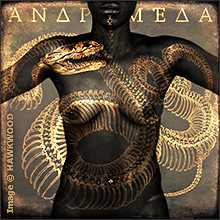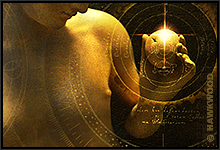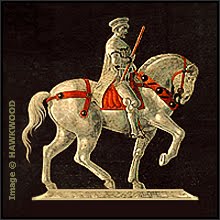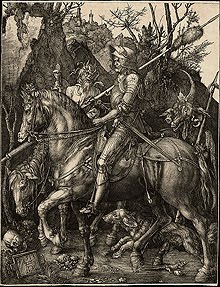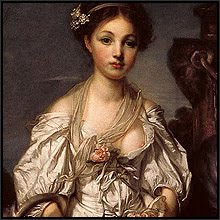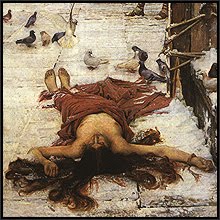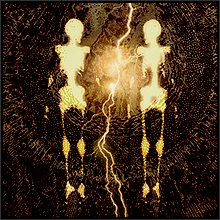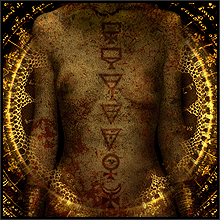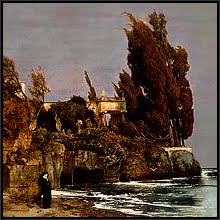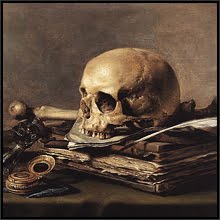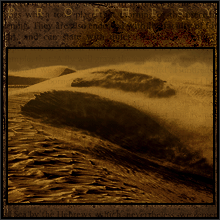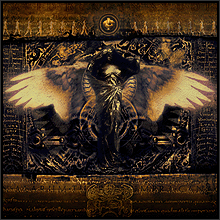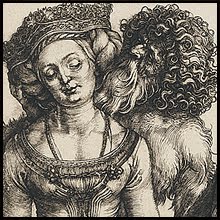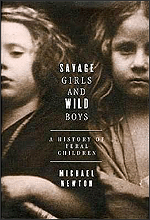
But the Watchers were prepared to give as well as to take. One of their number, Azazyel, gave to men the dubious gift of the arts of weaponry and warfare, and he showed women how they could enhance their beauty with trinkets, jewellery and makeup. The world became a place of lost innocence, of desecration, of suffering. And the half-angel offspring of the Watchers born to Earthly women, the Nephilim, proved to have voracious appetites, gorging their way through every living thing: the beasts of the field, the birds of the air, crawling reptiles, and the fish that swam in the waters. But then the humans around them also went onto the menu. Enough was enough.
The cries of despair coming from the human world were heard in heaven. The five archangels - Gabriel, Michael, Raphael, Suryal and Uriel - joined battle with the wayward fallen angels. Raphael bound the troublemaking Azazyel fast, Gabriel incited the Nephilim to an act of terrible mutual slaughter, and Michael bound Samyaza and the rest of the company deep beneath the earth, where they shall remain until the End of Days.
It certainly makes for a tremendous story. An epic clash of forces classically portrayed as good pitted against evil, which endures in our own contemporary culture through such films as Star Wars and many another. But is this primal battle the stuff of folk culture which belongs with our other sacred texts and mythologies? Or is it something more? As with so much else, it gets down to what you choose to believe. Supposing that these fallen angels were something more than just a story? Supposing that these beings really walked among us in those ancient times? If this was so, and if the Watchers really existed, then who were they?
Were the Watchers in reality perhaps all-too-Earthly visitors from a then-less familiar geographical region, strangers come from a strange land? Or were they even extraterrestrials visiting our planet to throw a few alien genes into the human mix, as has been speculated on the wilder shores of probability by some credulity-stretching theories? The case for the first option is argued cogently and even credibly by Andrew Collins in his book 'From the Ashes of Angels' (the striking cover art, above).
The second option comes from the writing of Zecharia Sitchin in 'The 12th Planet'. Now, I realize that Sitchin has a huge fan base out there, but for my taste his left-field ideas are too easy to disprove. His entire postulation rests upon the existence of an undiscovered planet - Nibiru - within our solar system, the chosen home planet for his alien Watchers. Nibiru, claims Sitchin, has a highly elliptical orbit, which is why its proximity to the Earth is so infrequent. But alas for his theory, the laws of planetary motion dictate that such a large planet as he claims Nibiru to be would be bound to settle into a near-circular orbit around the sun, making his entire theory impossible based upon this one crucial factor. Still, if you like the ‘ancient astronauts’ style of speculative theories, then this book will do it for you. Me, I'll stick with something a little more down-to-earth.
Artist: Hawkwood
Work: Samyaza, 2009
Medium: Digital with sculpted elements
Location: Cyberspace
Sources:
'Fallen Angels and the Origins of Evil' (see my previous post).
'From the Ashes of Angels', by Andrew Collins. Michael Joseph, 1996.
'The 12th Planet', by Zecharia Sitchin. Avon Books, 1978. Reissued by Harper, 2007.
*The name Samyaza later slipped into Christian tradition as Satan. Since nomenclature for the Watchers varies with translation, the spelling of names here follows that of the original 19th century translation of the Book of Enoch by Richard Laurence.
Visit Andrew Collins' website at: http://www.andrewcollins.com/



